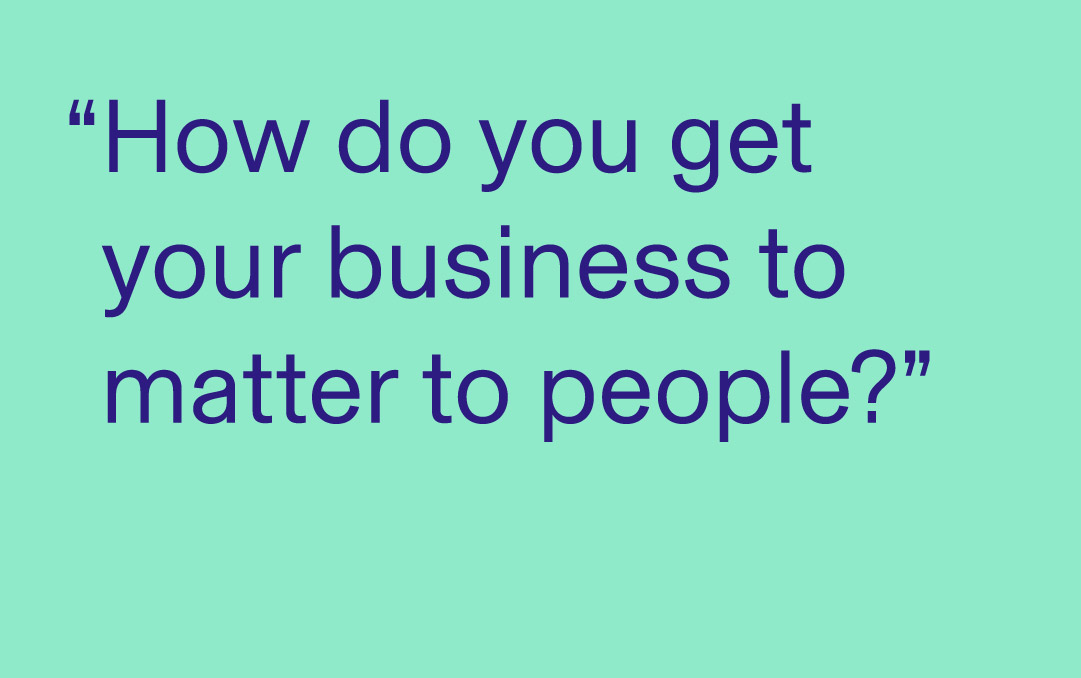Start with Executive Alignment
Vision, mission, and values give a company direction. They describe what a company stands for and what it doesn’t. Solid mission, vision, and values statements give guidelines for a brand’s behavior, help distinguish a company from its peers, and serve as a foundation for the brand’s ultimate personality. Without them, a company is rudderless.
So, when’s the right time to write these statements? Some companies don’t launch before they have a mission, vision, and values. Others develop them when time allows. With COVID-19 changing so many things from the way we show up to what gives us meaning in our work, now is a perfect time to embark on this exercise.
Though timing varies, the most important element in creating your mission, vision, and values is executive alignment. I promise it will be the hardest part of the process, but if you miss it you’ll end up with meaningless fluff. Start with alignment and the wording of the mission and vision almost takes care of itself.
Here are the steps to get you there:
1. Get your executive team on board
Include your executive team from day one. Yes, another project that takes time away from your “real work”. We get it. Mission/vision work doesn’t feel as urgent as launching a new product on time or making this quarter’s sales goal. But the longer you delay, the longer you have to wait for the impact. And if executives don’t take ownership of the project, they won’t have respect for the work that comes out of it.
2. Put it all out in the open: one-on-one interviews
Once you’ve got your executives’ attention, gather feedback from each exec individually. When we work with clients on mission/vision projects, we start by interviewing the key internal players. (If you are doing this project on your own, someone on your team, preferably a neutral player, could handle this step.) Big picture, you want to know where they think the company should go in the future and how it will get there. Again, 2020 has likely thrown a wrench in what you had previously planned for the business.
You also want to gather opinions on the current business and service offerings, market and competition, trends and regulations affecting the market in the short and long term, and current and future target customers.
3. Tackle the big issues and hot topics: executive alignment
Coming out of the interviews, you’ll have a list of statements that cover the kind of future that people in the organization desire for the company, how comfortable they are with change, and where they want to focus first.
For example, in a recent engagement, these were a few of the statements we generated for our client:
- “We need to change the status quo.”
- “Our vision should be internally vs. externally focused.”
- “We’re more comfortable as an ingredient brand than an innovator.”
4. Expect disagreement
If you are like most companies, people won’t always be in agreement. So rather than be frustrated by this, see it as your opportunity to find alignment.
Bring everyone together into one room—even virtually. Remember, people own what they build. Put each statement on a poster with an “agree/disagree” scale and ask individuals to use a post-it to show how they relate to the statement. When everyone is done, it’s time to discuss. (Pro tip: Google Jamboards combined with Zoom are a great way to do this virtually.)
Second, pull out from the interviews the “hot topics”, the issues that are holding the company back. If the team doesn’t address these issues, they’ll destroy the company.
We recently worked with a disability insurer. Their hot topics included things like the following:
- “Startups have already moved into term life and car insurance and erased the middleman. How will we prevent this from happening to us?”
- “We’re in the midst of digitizing the underwriting process. How does this project and that one overlap?”
5. Follow the Critical Path
Get everything out in the open before you start building a vision and mission. It can be painful and frustrating to hash out these topics but it’s an essential step in the process. You learn where people sit on every important issue and you figure out the hurdles you need to jump over to get to the mission and vision development stage. Only then can you decide together where the company is headed.
Speaking of the critical path, don’t focus on marketing before you have set your vision and mission. People get excited when they hear about a new strategy. They want to get started. We recently worked with a company that lacked a strong, energizing strategy. The marketing department recognized this more than any other part of the organization. They realized that the company was moving in a new direction and was so eager to communicate a new mission and vision that they put something in place before the executive team reached alignment on the mission and vision.
When we talked to the executive team about the mission and vision work we planned to do for the company, though, many felt uncomfortable with the marketing work communicating the new strategy. Misalignment all around.
Alignment Drives Business
Put in the hard work to get everyone around the table aligned on the path you’ll take. Focusing on alignment will pay off in the end. It will save you time, frustration, and energy, and allow you to better focus on what really matters—what will drive your business and brand into the future, with everyone on board.
If you need help building alignment, please reach out.
Emotive Brand is a brand strategy and design agency in Oakland, California






